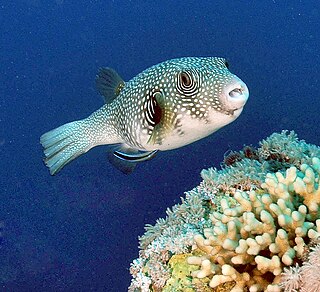
The white-spotted puffer fish is a medium to large-sized puffer fish, it can reach 50 cm length. It is light grey in color, or greyish or yellowish, and clearly covered with more or less regular white points, that become concentric contrasting white and dark grey lines that radiate around the eyes and pectoral fins. The ventral part is white. The "shoulder" is dark. It also has concentric contrasting white and dark grey lines that radiate around the eyes and pectoral fins. The white spotted puffer fish is poisonous.

Stenopus hispidus is a shrimp-like decapod crustacean belonging to the infraorder Stenopodidea. Common names include coral banded shrimp and banded cleaner shrimp.
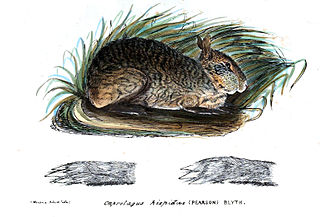
The hispid hare, also called Assam rabbit and bristly rabbit, is a leporid native to South Asia, whose historic range extended along the southern foothills of the Himalayas. Today, its habitat is highly fragmented with an area of occupancy estimated at less than 500 km2 (190 sq mi) extending over an area of 5,000 to 20,000 km2. Populations experienced a continuing decline in suitable habitat due to increasing agriculture, flood control, and human development. It is therefore listed as Endangered on the IUCN Red List since 1986. It is the only species in the genus Caprolagus.

Ferreira's spiny tree-rat is a spiny rat species found in Bolivia, Brazil, Colombia, Ecuador, French Guiana, Guyana, Peru, Suriname and Venezuela. The etymology of the species name corresponds to the Latin word hispidus meaning bristly.

The bristly catshark is a cat shark of the family Scyliorhinidae, found from southeastern India and the Andaman Islands, between latitudes 15° N and 5° N, at depths between 200 and 300 m. Its length usually ranges from around 20–26 cm, and it is regarded as the smallest catshark of Bythaelurus.

The hispid pocket mouse is a large pocket mouse native to the Great Plains region of North America. It is a member of the genus Chaetodipus.

The white-bearded hermit is a species of hummingbird in the family Trochilidae. It is found in Bolivia, Brazil, Colombia, Ecuador, Peru, and Venezuela.

The Angel Island chuckwalla, also known as the spiny chuckwalla, is a species of chuckwalla lizard belonging to the family Iguanidae endemic to Isla Ángel de la Guarda in the Gulf of California. The species was transported to other islands by a tribe of the Seri as a potential food source.
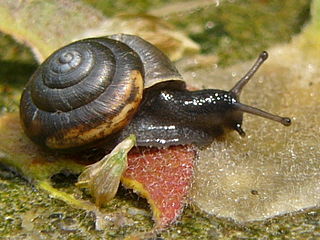
Trochulus hispidus, previously known as Trichia hispida, common name, the "hairy snail", is a species of air-breathing land snail, a terrestrial pulmonate gastropod mollusk in the family Hygromiidae, the hairy snails and their allies.
The Toltec cotton rat is a rodent species in the family Cricetidae. It is found in eastern Mexico from the Rio Grande to the Yucatán Peninsula, as well as in Belize and northern Guatemala. It prefers moist grassland habitat. While long thought to be a subspecies of S. hispidus, recent taxonomic revisions, based on mitochondrial DNA sequence data, have split the extensive former species range into three separate species. Carroll et al. (2004) indicate that the southern edge of the S. hispidus distribution is likely near the Rio Grande where it meets the northern distribution of S. toltecus. The range of S. toltecus extends from northern Mexico south into Chiapas where it occurs in sympatry with S. hirsutus . Rats from this species group have been used as laboratory animals.
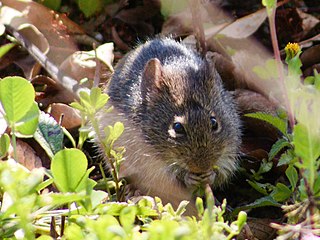
The southern cotton rat is a rodent species in the family Cricetidae. It is found from southern Chiapas in Mexico through Central America, except for Belize, and as far east as northern Colombia and Venezuela. It lives in tropical rainforest, dry forest and savanna, as well as in cultivated areas. The species is terrestrial and primarily diurnal. It was long thought to be a subspecies of S. hispidus. However, recent taxonomic revisions, based on mitochondrial DNA sequence data, have split the extensive former species range into three separate species. Carroll et al. (2004) indicate that the southern edge of the S. hispidus distribution is likely near the Rio Grande where it meets the northern distribution of S. toltecus. The range of S. toltecus extends from northern Mexico south into Chiapas where it occurs in sympatry with S. hirsutus . Rats from this species group have been used as laboratory animals.
Neostenotarsus is a genus of theraphosid spider, in the Theraphosinae subfamily. It is native to French Guiana. It is monotypic, the only species being Neostenotarsus scissistylus.
Aphilanthops is a genus of ant queen-kidnapping wasps in the family Crabronidae. At least four species in Aphilanthops are described.
Geodercodes is a genus of broad-nosed weevils in the beetle family Curculionidae. There are at least two described species in Geodercodes.

Stenotarsus is a genus of handsome fungus beetles in the family Endomychidae. There are more than 50 described species in Stenotarsus.
Rhexidius is a genus of ant-loving beetles in the family Staphylinidae. There are about 10 described species in Rhexidius.

Trachodes hispidus is a species of true weevil in the beetle family Curculionidae. It is found in North America and Europe.
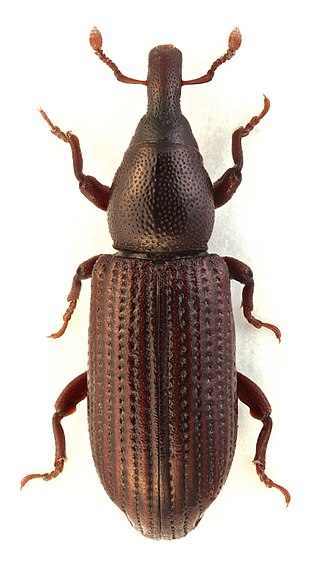
Phloeophagus is a genus of true weevils in the beetle family Curculionidae. There are more than 30 described species in Phloeophagus.
Aphilanthops hispidus is a species of wasp in the family Crabronidae. It is found in Central America and North America.

Pseudocaecilius is a genus of false lizard barklice in the family Pseudocaeciliidae. There are more than 50 described species in Pseudocaecilius.














